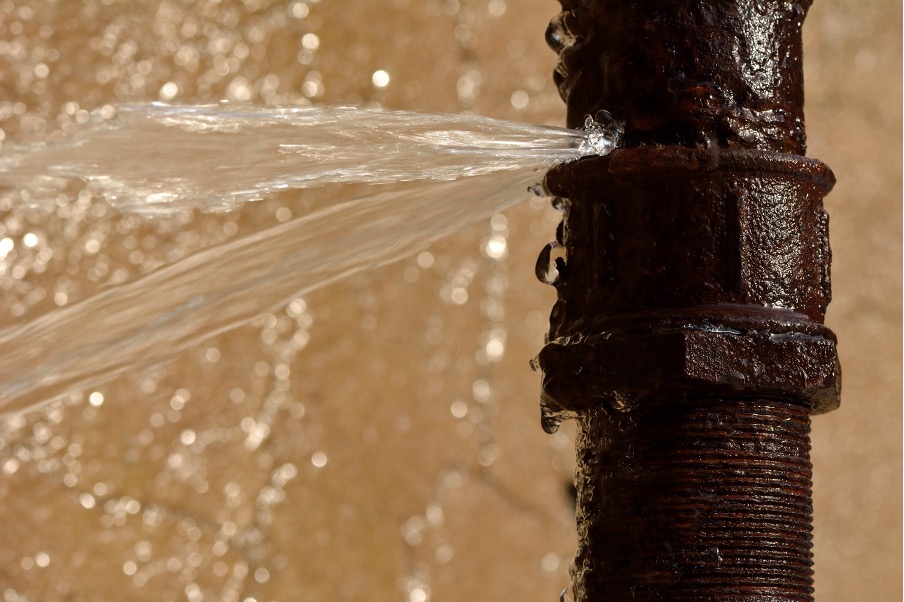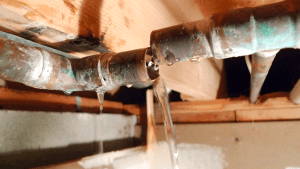Do you find yourself looking for tips around Top leak detection hacks?

Early discovery of dripping water lines can alleviate a potential calamity. Some tiny water leakages may not be noticeable.
1. Examine the Water Meter
Inspecting it is a guaranteed method that assists you uncover leakages. If it relocates, that indicates a fast-moving leak. This indicates you might have a slow-moving leak that might also be below ground.
2. Examine Water Intake
If you spot sudden changes, despite your usage being the exact same, it indicates that you have leaks in your plumbing system. A sudden spike in your bill indicates a fast-moving leakage.
A steady increase every month, also with the very same behaviors, reveals you have a sluggish leakage that's also gradually rising. Call a plumber to completely inspect your building, specifically if you feel a warm location on your floor with piping below.
3. Do a Food Coloring Examination
When it comes to water usage, 30% comes from bathrooms. If the color somehow infiltrates your dish throughout that time without flushing, there's a leak between the tank as well as dish.
4. Asses Exterior Lines
Do not fail to remember to examine your outdoor water lines too. Must water permeate out of the connection, you have a loosened rubber gasket. One tiny leak can lose tons of water and spike your water expense.
5. Check and also Analyze the Situation
Homeowners must make it a behavior to check under the sink counters as well as also inside cupboards for any kind of bad odor or mold and mildew growth. These two red flags suggest a leak so prompt interest is called for. Doing routine assessments, also bi-annually, can conserve you from a major issue.
If you understand your house is currently old, keep a watchful eye on your heaters, hose pipes, pipes etc. Check for discolorations and also weakening as the majority of pipes as well as devices have a life span. They will likewise normally weaken because of damage. Do not wait for it to intensify if you suspect dripping water lines in your plumbing system. Call an expert plumber as soon as possible so you do not end up with a terrible mess in your house.
Early discovery of dripping water lines can minimize a possible calamity. Some little water leaks might not be visible. Inspecting it is a proven method that helps you find leakages. One tiny leakage can squander heaps of water and increase your water bill.
If you believe leaking water lines in your plumbing system, do not wait for it to escalate.
The Dangers of Undetected Water Leaks
Mold
One of the most common results of undetected water leaks in your home is mold. Under the right conditions, mold can begin to grow and spread in just a day or two.
Moisture from water leaks combined with humidity and lack of ventilation allow mold spores to germinate and start spreading.
And while household mold doesn’t carry the same health risks as substances like asbestos, they can cause allergic reactions in people sensitive to them or with asthma.
Structural Damage
When water leaks occur in places we can’t see — above the ceiling, behind walls or beneath floors — they often have time to do some serious damage before making themselves known.
You might notice cracks or bubbles appear in your walls or a slow drip or water from the ceiling.
These are signs of water leaks and buildups in the structure of your home. If you don’t jump on these problems soon enough, the wood frame that supports your house could start rotting, leading to costly repairs and increasing the risk of disasters like ceiling or wall collapses.
Water Waste
According to the Alliance for Water Efficiency, the average home can lose anywhere from 2,000 to 20,000 gallons of water per year due to leaks.
High numbers like that might make you imagine a burst pipe spewing out water. But believe it or not, even a small, constant drip from a kitchen sink could add up to over a thousand gallons of wasted water in a single year.
And if you live in a place where you pay for every gallon of water you use, that adds up to a lot of dollars down the drain. So we understand leaks are bad. Let’s take a look at some of the common (and not-so- common) water leaks you might find around your home.
Flush Valve Flapper
The flush valve flapper is a rubber flap that sits above the flush valve at the bottom of the tank. It’s attached to the flusher with a chain. Over time, it can get worn out and lose its seal, causing an endless flow of water into the toilet bowl.
These leaks are hard to detect since they’re usually silent, but there’s a little insider trick you can use with just a little dye or food coloring:
Put a few drops in the toilet tank. Check the water in your toilet bowl 15 minutes later. If any of the color made it into the toilet bowl, you’ll know what the culprit is.
Fill Valve
The fill valve is what replenishes your toilet’s tank water after you flush. If you’ve ever looked inside your toilet tank and seen water gushing out of an upright plastic valve, that’s a faulty fill valve.
https://meetflo.com/blogs/flo/how-to-find-and-repair-water-leaks-a-comprehensive-guide

Hopefully you enjoyed our post about Hacks to detect leaks. Thank you so much for taking time to read through our posting. For those who liked our blog entry kindly make sure you remember to pass it around. Thanks for your time invested reading it.